By Chris Grinter, á 19 apríl, 2011
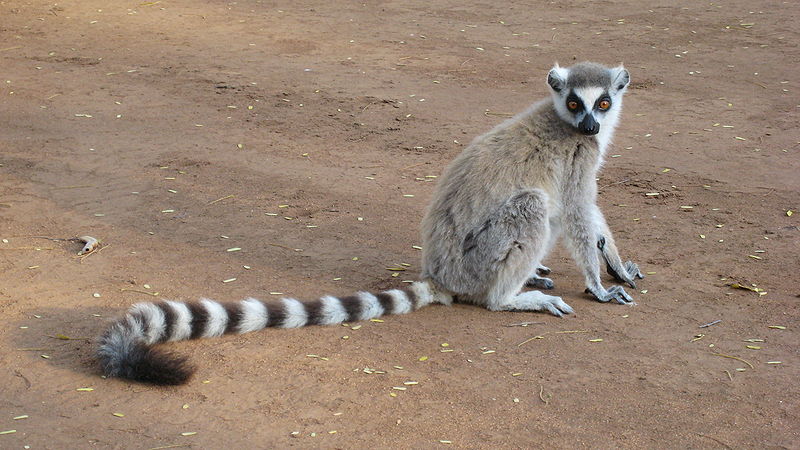 Source: Wikipedia Það kemur í ljós að Richard Branson hefur ný hugmynd; til að vista hringur-tailed lemur (Lemur catta) by importing them to his private British Virgin Island. Eins greinin bendir Branson eytt milljónum króna og ára viðleitni til að snúa eyjunni í “the most ecologically friendly island in the world”. But it appears Mr Branson has decided to forgo conservation science and rewrite it in a more PR friendly way. In come the lemurs despite the cautions of his own ecological assessment because he wants “…to create a second island habitat and the conditions on Moskito are perfect.” Perhaps Branson has a bizarro world dictionary where the definition of the word perfect is “something completely dissimilar from the original”.
OK sure, at first the idea sounds like a fine one – the lemurs are endangered, why not try to give them a second wild refuge? Jæja, Dr James Lazell of the Conservation Agency has had 31 years experience in the Virgin Islands and has pointed out that “Lemurs are agile, dexterous, aggressive, omnivorous animals that could have a detrimental effect on these simple island ecologies. They eat absolutely everything – lizards, fruit, roots, skordýr, birds’ eggs.” Oh but don’t worry, nothing bad can happen when you introduce primates to an island (introduced primates devastate Florida Key). Branson knows that the lemurs will only “take the odd gecko” (like the rare endemic dwarf-gecko Sphaerodactylus parthenopion), not to mention they probably won’t spread to other islands since they “hate swimming” (ring tailed lemur swimming).
So why then the ring-tailed? Not because it is the most endangered (það eru hellingur of other more endangered lemurs), but because it is the most iconic. That is what really drives me up the wall about this ridiculous idea. Not only is he naively introducing a possibly invasive species into a sensitive island habitat – but because he is spreading a false message of conservation. Like a slow child Branson has rushed to the ring-tailed to save it while completely missing the entire idea behind conservation. The ring-tailed is a flagship species, one that draws attention to the devastation that is occurring in Madagascar. One cute cuddly animal to represent the staggeringly unique and diverse habitats of its homeland. But not if Richard Branson has anything to say about it. Why bother protect Madagascar when you can swoop in and create a new home for a primate everyone loves? phew, crisis averted. Richard fiddles while Madagascar burns.
I suspect this freakish island zoo is simply masquerading as conservation and the real incentive behind it is commercial. Over the next few years there will be a handful of “luxury, carbon-neutral homes built on the island”. A pretty brilliant scheme to incentivize the purchase of homes that undoubtedly will cost tens of millions of dollars each – and you can pretend to feel good about protecting the world while you do it. After all the Virgin Islands lack any charismatic wildlife; nature sure does a terrible job of creating a billionaires wonderland. What comes next to the island?
Maybe… just maybe… Branson has Dr. Moreau moving in first.
By Chris Grinter, á 18 Apríl, 2011 A few weeks ago I was invited to join a Berkeley entomology class out in the field for the weekend. Our destination was the Blue Oak Ranch Reserve; one of the newest reserves to the University of California system located just outside of San Jose on Mount Hamilton (map below). It was a joint spider and beetle class trip, hosted by Charles Griswold og Dave Kavanaugh respectively. And despite a frost on Saturday night we managed to find some interesting insects. You’ve already seen my images of the Scaphinotus (Carabidae), but here is a larger set of images from both myself and colleague and fellow blogger Tamás Szuts.
 Staphylinidae: Aleocharinae? 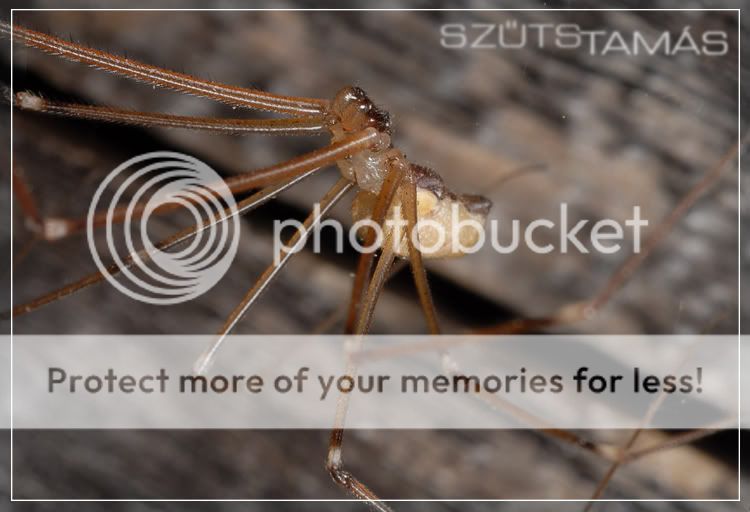 Pholcidae : likely Pholcus sp. 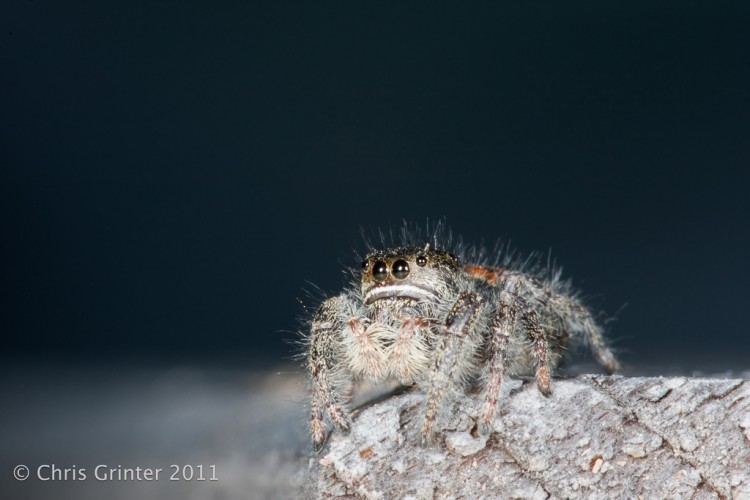 Salticidae: Phidippus sp. Continue reading Blue Oak Ranch Reserve
By Chris Grinter, á apríl 6, 2011 OK – nokkrar Apologies fyrir að hafa ekki fullt af myndum * enn * lirfanna ræðir (Ég mun á næstu dögum!). Um helgina var ég út með hóp af Berkeley nemenda á Mount Hamilton og doktorsnemi Meghan Culpepper safnað nokkrum tegundir Scaphinotus og sumir lirfur! So the specimen from Monday was indeed the larvae of a Scaphinotus beetle feasting inside the shell of a native terrestrial snail. This challenge was a hard one since these predatory Scaphinotus larvae are rarely encountered and there are zero images of out there – and none of them feeding. Better luck next time!
For now, here is an undetermined Scaphinotus species. In the coming weeks I will have 4-5 species photographed and identified (by Meghan) – and the larvae will have to be sequenced for species ID. Dvöl lag.
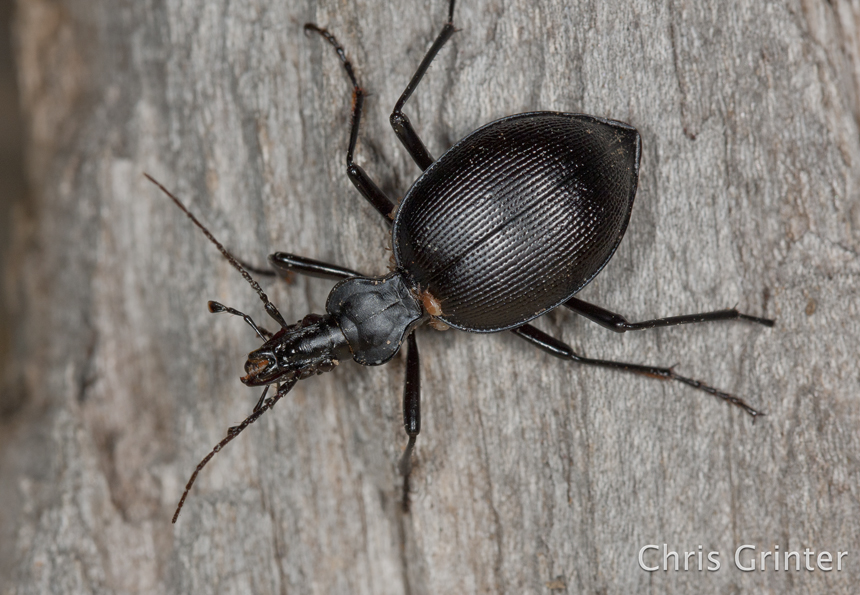
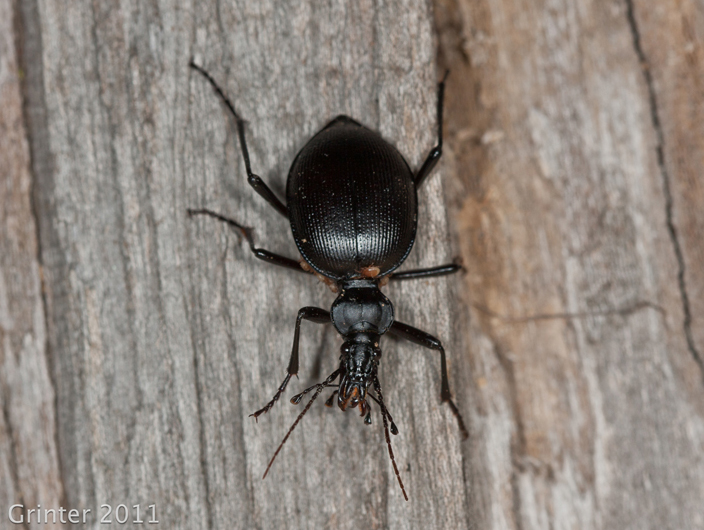
By Chris Grinter, þann 4. apríl, 2011 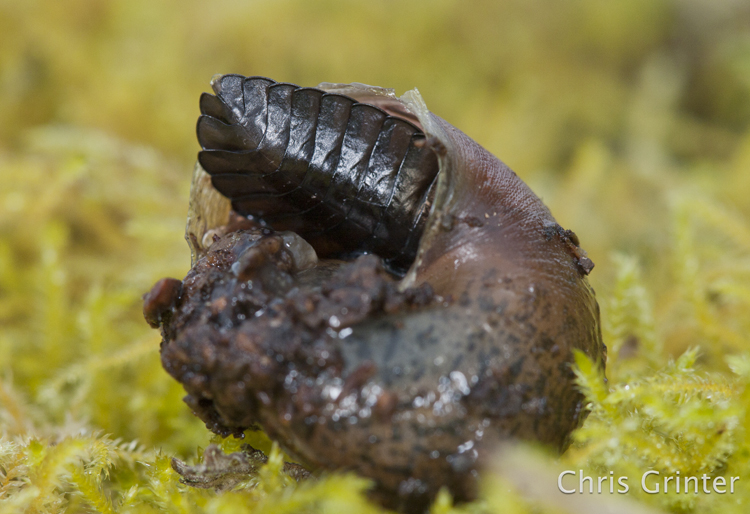
Rakst á þennan gaur þegar hann var úti á túni um daginn, hvað er í gangi hér? Stig veitt fyrir röð/fjölskyldu/ættkvísl – en jafnvel sérfræðingar í þessum hópi geta ekki fundið út tegundina alveg ennþá.
(everyone in the field with me should hold their comments until the guesses come in!)
By Chris Grinter, þann 30. mars, 2011 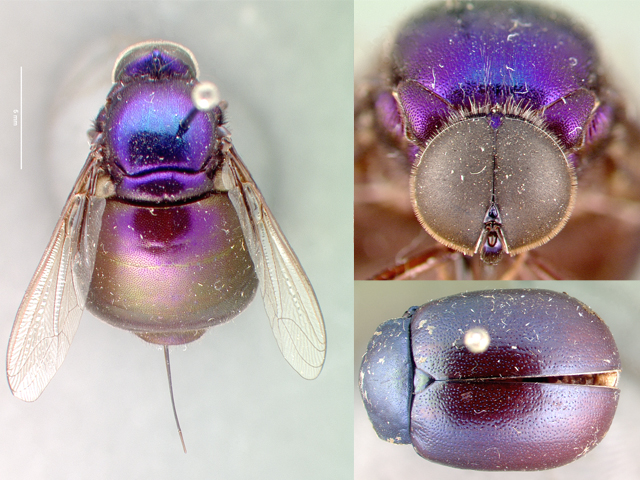 Lasia klettii: Myndir eftir April Nobile, MÁLIÐ Lasia klettii: Myndir eftir April Nobile, MÁLIÐ
Að mestu leyti eru flugur ekki skordýr sem ég verð of spennt fyrir. Þó, hin ráðgáta fjölskylda Acroceridae eru undantekningin. Ég mun byrja að deila áhugaverðum ættkvíslum af og til – formgerð fjölskyldunnar er ótrúlega fjölbreytt. Flestum dögum mínum er eytt á safninu við að skrá gríðarlegt safn okkar af yfir 16,000 Acorcerids (aka smáhausaflugur). Það hljómar kannski ekki allt of áhrifamikið þegar þú berð það saman við aðrar fjölmennari fjölskyldur (og það fölnar í samanburði við yfir 17,500,000 annað eintök sem við eigum á safninu); en það reynist tákna marga, ef ekki flestir, af allt þekkt eintök fyrir alla fjölskylduna. Þó að það séu líklega stórar samsetningar af þessum flugum í öðrum stofnunum, Vísindaakademían í Kaliforníu getur auðveldlega gert tilkall til metsins síðan hún fékk safn Dr. Evert I. rúlla (sem kemur af og til til að vinna frá safninu).
Acrocerids reynast frekar erfiður hópur að rannsaka vegna þess hversu sjaldgæf þau eru í náttúrunni, sníkjudýralíffræði þeirra, og hversu erfitt getur verið að ná þeim á væng. Stór brjósthol þeirra er pakkað af vöðvum sem skjóta flugunni í gegnum loftið – þannig að ef þú grípur þá ekki við blóm þá ertu eftir að þrá malagildru. Ev sagði mér eina sögu af því að læra að ná þessum á vængnum í Kosta Ríka. Þú stendur í vindinum frá samstarfsmanni á sviði – um leið og einhver heyrir eitthvað renna framhjá, þú sveiflast ofboðslega í von um að ná flugunni fyrir tilviljun… það virkar öðru hvoru. Þessar flugur eru líka einu þekktu sníkjudýr fullorðinna köngulær (það gæti verið skrá um Tachinid…). Ofangreind ættkvísl, NýttLasía, er sníkjudýr af Theraphosid tarantulas (eitthvað eins og Aphonopelma). Sem lirfa vinnur flugan sig upp um fætur köngulóar og grafir sig niður í kviðinn þar sem hún sest síðan inn við hlið bóklunga og stingur smá öndunargati.. Svo bíður það þolinmóður eftir því að kóngulóin nái þroska. Með kvenkyns tarantúlum, flugan gæti verið í dvala í áratugi. Að lokum gerist eitthvað í ætt við myndina Aliens og lirfurnar nærast á innri líffærum kóngulóarinnar koma síðan fram til að púpa sig. En að komast að því hvort könguló sé með sníkjudýr eða ekki er ómögulegt án krufningar – svo stór söfn af lifandi köngulær verða að vera viðhaldið til að fá hýsilskrár. Sníkjudýralíffræði er bara svo flott.
Ofangreint sýnishorn (Lasia klettii nýtt, ónefndur, tegundir) var safnað inn 1977 með Schlinger nálægt bænum Alamos, Mexíkó – á blómum með líklega eftirlíkingu, Chrysomelidae bjalla (bjöllufólk, einhverjar hugmyndir umfram fjölskylduna?).
By Chris Grinter, á 24 Mars, 2011 Better be careful of what you do while out in the countryside. Farms getur verið hættuleg stöðum, sérstaklega ef þú ert ljósmyndari. Fyrirhuguð löggjöf í Flórída, hét einfaldlega “bæjum”, er að reyna að gera ljósmyndun eða teikningar í, on or af a farm without explicit written consent a first degree FELONY (allt að 30 years in prison). What could possibly be the justification for this legislation? Journalist Barry Doyle suggests the good Senator is tightly in the pockets of Agribusiness – looking out for those poor farmers who are targeted by animal rights groups or even worse – human rights groups! I tend to concur, this legislation is a disgusting piece of corruption. It gets pretty bad:
(2) A person who photographs, video records, or otherwise produces images or pictorial records, digital or otherwise, at or of a farm or other property where legitimate agriculture operations are being conducted without the written consent of the owner, or an authorized representative of the owner, commits a felony of the first degree…
I strongly encourage any of my Florida readers to write to Senator Norman and express your absolute disgust in his legislation.
14031 N. Dale Mabry Blvd.
Tampa, FL 33618
(813) 265-6260
Senate VOIP: 41200
I also encourage everyone else everywhere else to write to your US representative and exclaim your outrage over this possible violation of first amendment rights (only a proposed violation at this moment).
And just for good measure, here is a bad cellphone picture I took while in Oregon with lots of farms.
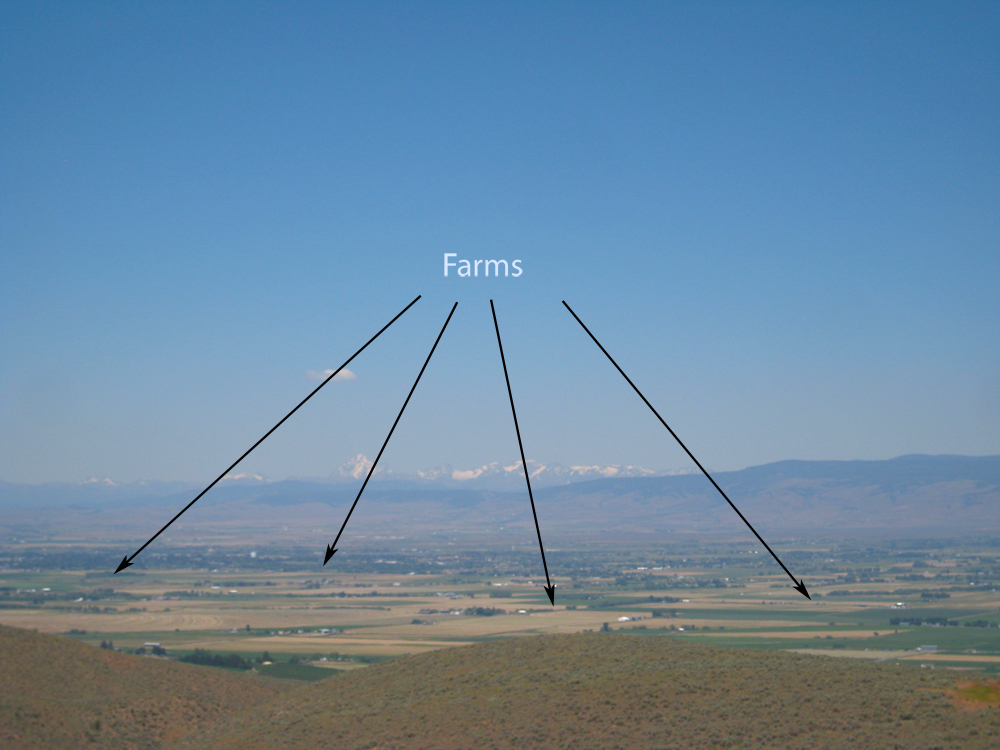
By Chris Grinter, á 22 mars, 2011 Venjulega rekst ég nógu reglulega á hræðilegar skordýrafræðigreinar til að ég geymi eftirstöðvar fyrir seríur í framtíðinni. Þetta hefur ekki verið raunin undanfarnar vikur, Ég hef ekki rekist á venjulegt úrval af hræðilegu fjölmiðlafári. Kannski verð ég bara dauðþreyttur og hætti að skoða jafn vel – but this week I even came across a moth related correction from the Maui News. They fixed their error, but must have deleted the original article…
And for this week I found Þessi grein with the image below. Should be pretty easy to spot the weirdness (þeir do at least manage to point out that the moth is ekki the LBAM (light brown apple moth)).
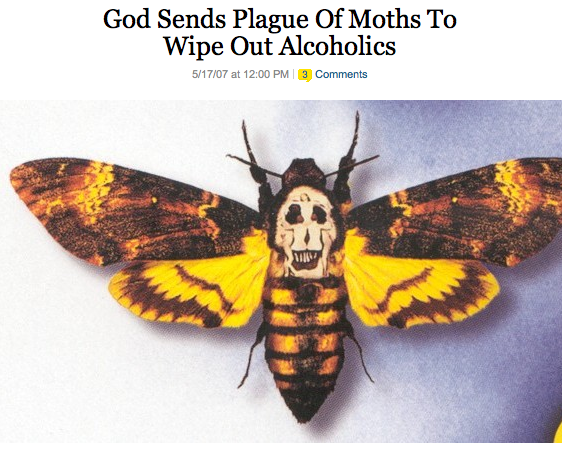
By Chris Grinter, 18. mars, 2011 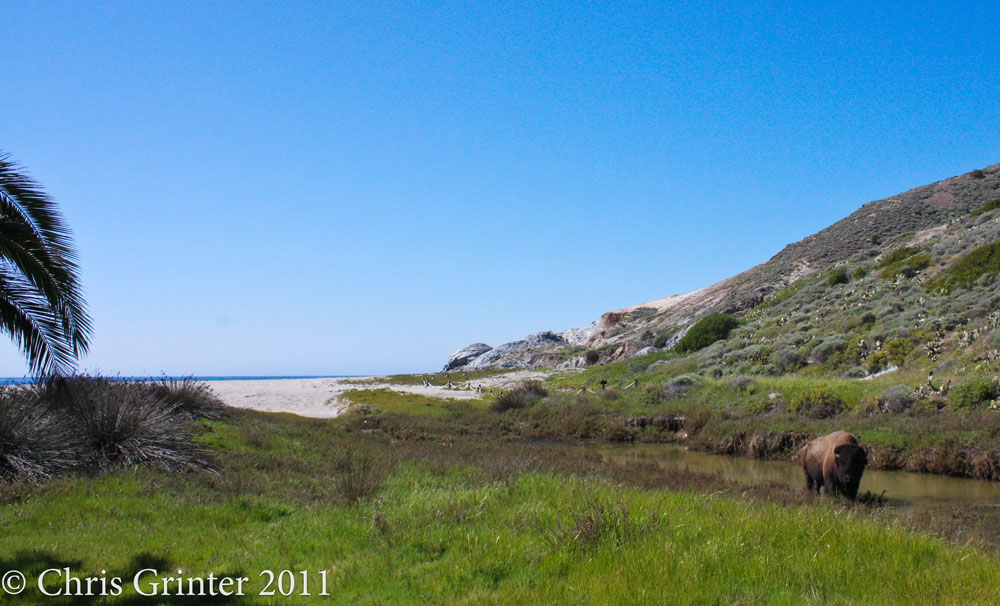
Perhaps the only place in the world where you can find an American bison (vs. buffalo) standing near a beach next to a palm tree. The week on Santa Catalina was an wonderful one, and despite a cool spring with a few unseasonable frosts, some decent collecting was done. Here are just a few amusing images and you’ll notice one thing right away: no fields of wildflowers! As it turns out, almost a century of goat, pig and bison grazing has left mostly grass and cactus on the island. At one point there were over 1000 bison and countless herds of goats; it’s a wonder anything survived at all! Í dag, there are thankfully only a modest ~200 bison left that are even on birth control (you guessed it, you can’t shoot the damn things since people “love” them – just like the stupid eucalyptus you can’t cut down). Í 1924 a small heard of bison were brought over to shoot the movie The Vanishing American. Náttúrulega, the project went over budget, the scene was cut and the animals were let loose instead of paying to return them home. 80 years later and you’re left with an island you can only fight to “conserve” and not restore. Sad fact is that we have no clue what the island actually used to be like. It’s even hypothesized that the endemic island fox (of which we saw 6!) was brought over by indigenous peoples a few thousand years ago from neighboring islands. I guess it’s in our nature to mess with our environment.
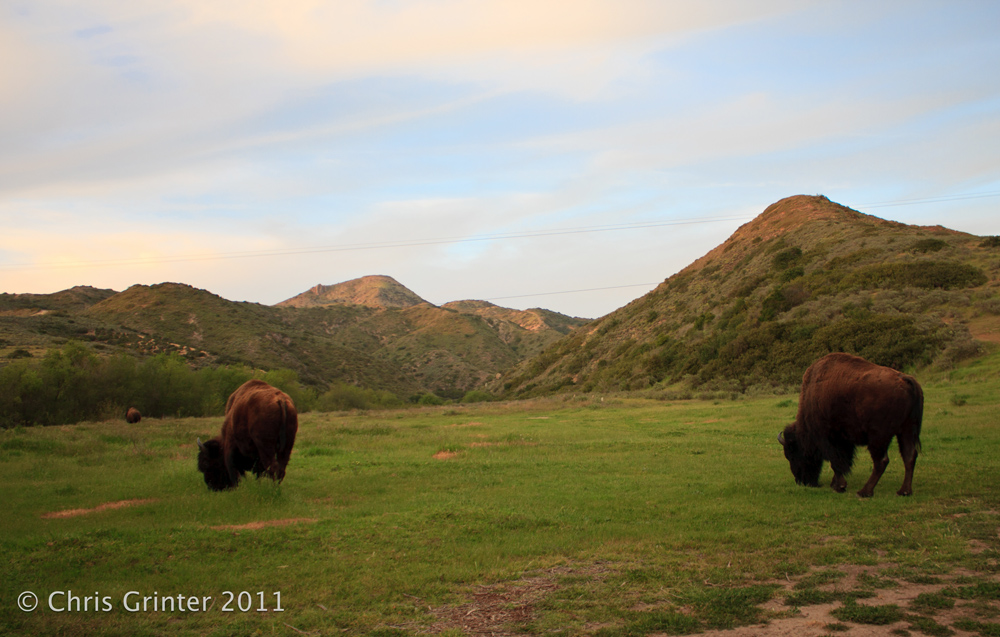
As I was photographing the above, this beast walked up behind me. It wasn’t running, I was!
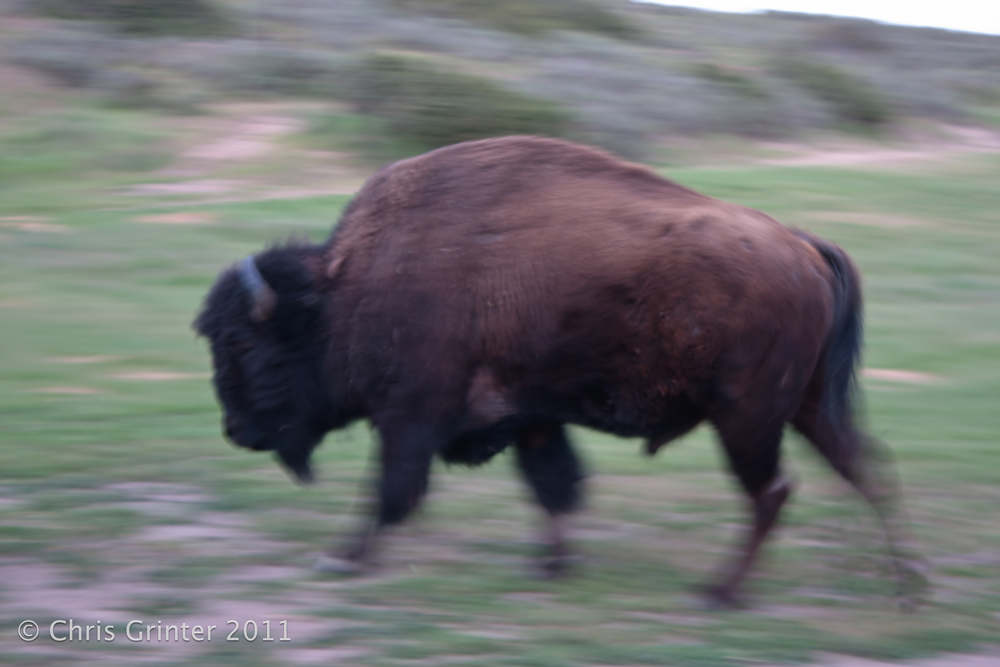
By Chris Grinter, þann 8. mars, 2011 [cetsEmbedGmap src=http://maps.google.com/maps?ll=33.393039,-118.416824&spn=0.359452,0.715485&t=h&z=11 width=600 height=330 marginwidth=0 marginheight=0 frameborder=0 scrolling=auto]
Tomorrow morning I’m off for a 10 day collecting trip down to Catalina Island. I’ve been lucky enough to be invited to join Dr. Jerry Powell of UC Berkeley on a moth survey, and this will be my first time to any of the islands. The Channel Islands are known for their high levels of endemism, and none is more famous than the Channel Island Fox. There are also a handful of endemic butterflies and moths that I’ll be hoping to find, but at the very least I know it’s wildflower season and I’ve got my camera primed.
I will likely have little or no access to the internet while staying on the island, so hang tight for a week. Had I planned ahead I would have scheduled posts or a guest author! Please do stay tuned for some of my first images of the 2011 field season.
By Chris Grinter, on March 3rd, 2011 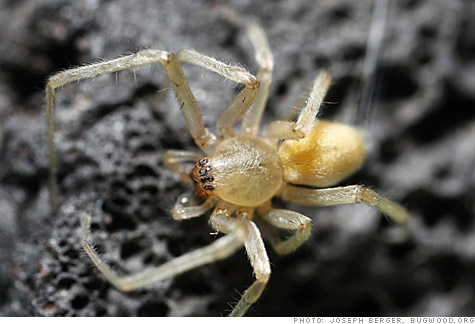
Virðist something in the Mazda 6 fuel line is warm and inviting for the yellow sac spider, enough so that they are building webs over the vent systems of the 4 cylinder vehicles (and not the 6!). The problem has been deemed a “spider infestation” by the car company, and the clogged vent lines then can lead to a cracked gas tank and the possibility of a fire.
“A certain type of spider may weave a web in the evaporative canister vent line and this may cause a restriction of the line”
So far only 20 cases are confirmed, but this problem is prolific enough that it has lead to a recall of over 52,000 sedans! I think it’s high time the major car companies hire entomology consultants – after all, my retainer would be a lot less than the cost of that recall…
I consulted with our resident team of arachnologists here at the MÁLIÐ, and the above image does appear to be a sac spider. It’s too hard to tell from the image, but it’s probably not an egregious taxonomic failure.
|
Efahyggja
|














